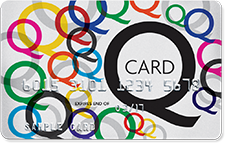How to trim an overgrown hedge

Pruning and trimming hedges is an essential gardening skill that involves removing the dead or overgrown stems, roots and branches on hedges, trees and shrubs. By trimming each year, it encourages healthier, thicker and more symmetrical growth of your plants – something every gardener wants.
Flowering hedges and trees will also experience prolonged flowering if the old flowers are removed before going to seed. In essence, pruning and trimming are techniques which follow the natural processes of nature, only in a more controlled and managed way.
Hedgetrimming requires a little bit of skill, knowledge and time to perfect. When combined with the best tools for the job, it becomes a pleasure rather than a pain.
Let’s look more closely at why you should trim your overgrown hedges, how to do it without killing them and what tools will work best.
Why Pruning and Trimming is Important
Regular trims and pruning allow your plants to benefit from increased sunlight, better airflow, and improved water delivery to the roots. All of these can help prevent bacterial, viral and fungal diseases taking hold while keeping your plants in tip-top condition.
Here are just a few reasons to keep your hedges well trimmed.
- Improves leaf growth and flower yield
- It removes old or infected deadwood
- It improves the health of the plant
- It Increases sunlight delivery to newer shoots
- It encourages buds to open
- It creates an aesthetically pleasing finish
Hedgetrimming Requires a Plan of Action
Trimming hedges is much easier if you have a plan of action in place. First of all, you should have an understanding of the plant species you are trimming, as this will help you work out the best time to take out your hedgetrimmer.
- Try to aim to trim your hedges when there are limited humidity levels, clear skies and the weather is cooler. This can help to reduce the risk of infection or disease setting in and killing your hedges.
- If you notice new buds on your hedge, then this will be the ideal time to get to work on them.
- It is better to prune or trim hedges with the minimum number of cuts possible to avoid bacteria and fungi entering the open wounds.
- The first step is to cut out any dead wood and older growth from the point of origin.
- When cutting inwards with limited sight of the main branches, use small, slightly angled sweeping cuts. This lets you thin out the hedge without severing one of the main trunks.
- After this, the training cuts are made. These are the cuts that allow the branches to grow in the direction you desire.
- Where possible, aim to mimic the natural shape of the tree or shrub. This will make life much easier over the long run and result in less pruning and shaping.
- When using an electric hedgetrimmer, the easiest way to get the shape and height you want is to start at the base and make large sweeping cuts in an upward direction.
- Once the sides have been trimmed, the tops can be levelled off with ease.
When is the Right Time to Prune?
Every plant species will differ with this. As a general rule of thumb, the dormant period over winter is generally considered the best time to prune and trim back your hedges. There is no optimal time for removing dead wood and smaller branches.
However, it’s not advisable to trim hedges in early to late autumn if you live in a temperate area. This is due to an abundant presence of fungi spores that can infect your hedges and kill them off. Ideally, late winter and early spring are the best times to cut back an overgrown hedge. Summer is best for trims that maintain their shape and height.
Best Hedgetrimming and Pruning Tools
There are a few tools that you can use to help make trimming an overgrown hedge much easier. Hand shears are fine for smaller hedges, but a high-quality, durable hedgetrimmer will trim your hedge in no time at all, and give you a superior finish each and every time.
It’s important to take care of your trimming and pruning tools by giving them a good clean and oiling on a regular basis. Clean tools will prevent disease from spreading from one plant to another, and will create cleaner, easier-healing cuts.
Hand Shears and Pruning Saw
Hand shears and pruning saws are great tools for cutting out small and hard-to-reach branches. There are two basic styles of hand shears available that you can use. These are the scissor action shears and the anvil cut shears. Scissor action shears have a thin blade which slides over a thick blade. While anvil cut shears have sharp blade sliding over a flat blade. Pruning saws, such as the Husqvarna foldable 200FO make quick work of small- and medium-sized branches, and help remove any larger branches that a hedge trimmer may not be able to cut through.
Professional Hedgetrimmer
Hedgetrimmers are commonly used for maintaining hedges, shrubs and trees. Not only do they make the hedgetrimming process an enjoyable one, but they also save you time on your garden chores – thus allowing you to spend more time relaxing in your garden rather than working in it.
Electric and petrol hedgetrimmers remove much of the manual effort and exertion that is common when using hand shears. They are also much safer than the majority of manual hedge trimming tools. This is due to in-built safety features that means an electric hedgetrimmer will only work when both of the handles are compressed by the user.
A professional hedgetrimmer such as the Husqvarna 522HDR60S is an ideal solution for those with large hedges that need regular and ongoing maintenance. Designed for maximum power and reach, they offer a durable solution for keeping even the most unruly hedges in shape.
Battery Hedgetrimmer
A battery-powered hedgetrimmer also eliminates power cable and wires. No longer will you need to be wary of cutting through power cords or tripping when using it. The introduction of battery power also makes today's hedgetrimmers quieter, much lighter and easier to handle. There is no compromise when it comes to cutting power and an entire garden can be taken care of with just one charge.
No power outlet in the garden? No problem. Battery hedgetrimmers have an extended reach, which ultimately makes it much easier to trim tall hedges and shrubs without restriction.
Top Hedgetrimming Tips
- When pruning or trimming mature hedges, the thickest branches should be removed first to help promote better growth.
- In areas with snowfall or ice, it is advisable to create rounded tops on hedges and shrubs to prevent them from experiencing accumulation that can damage internal branches.
- When pruning evergreens. Larger, individual stems should be cut off first.
- Evergreens which have narrow leaves should be pruned when they are young as this will result in controlled growth and improved health.
- Evergreens with broad leaves do not require much care. They can go many seasons without heavy trimming. If a large amount of old wood is removed it can impair new growth. Aim to do little but often.
- Manual Shears are quite easy to handle and make trimming inner branches a cinch. Use these to remove any particularly thick branches before finishing off the job with a powerful and durable hedge trimmer.
- Start from the bottom and make your way up. Overgrown hedges can handle a heavy trim, but take care not to sever any of the main branches that feed the top.
- If possible, trim hedges in mid-morning. This is when the dew has evaporated and there is limited moisture in the air. If not possible, aim for late afternoon.

